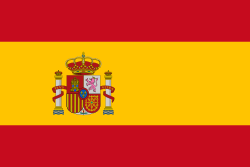What are Energy Investors?
Power inverters are electronic devices that play a crucial role in energy conversion in renewable energy systems, especially in solar photovoltaic and wind power installations. Their main function is to transform the direct current (DC) generated by solar panels or wind turbines into alternating current (AC), which is the form of electricity used by most household appliances, as well as the electrical grid in general.
Types of Investors
There are several types of inverters, each with specific characteristics and applications:
- String inverters: These connect multiple solar panels in series. They are the most common type of inverter in residential and commercial installations due to their simplicity and low cost.
- Microinverters: These are installed individually on each solar panel, allowing for more detailed control and monitoring. They are ideal for systems where shading or misalignment between panels could affect energy production.
- Central inverters: These are used in large solar installations, connecting a large number of panels into a single device. They are efficient for large-scale projects, such as solar parks.
- Hybrid inverters: These combine the functions of grid-tied and battery inverters, allowing energy storage for later use. They are useful in systems that integrate solar energy and battery storage.
Functions and Purposes of Energy Investors
1. Energy Conversion
Converting direct current to alternating current is the most fundamental function of an inverter. The electricity generated by solar panels or wind turbines is initially in the form of direct current, which is unsuitable for common use or connection to the electrical grid. The inverter transforms this energy into a form that can be used by household appliances and electrical devices, as well as sent back to the grid.
2. Performance Optimization
The inverters are designed to maximize energy production. They use advanced algorithms to perform maximum power point tracking (MPPT), adjusting power output based on light and temperature conditions. This allows the system to extract the most energy possible from the solar panels, improving overall system efficiency.
3. Synchronization with the Network
Inverters ensure that the energy produced is in the correct phase and frequency to be integrated into the electrical grid. This is critical, as any mismatch could cause power quality issues or even damage the system. Modern inverters are equipped with technologies that allow them to automatically synchronize with the grid, facilitating a stable and secure connection.
4. Monitoring and Control
Many contemporary inverters include monitoring features that allow users to check energy production in real time. Through mobile apps or web platforms, owners can track their system's efficiency, identify potential problems, and optimize performance. This monitoring capability is also useful for installers and technicians, who can perform remote diagnostics.
5. System Protection
The inverters are designed with multiple safety mechanisms to protect both the generating system and the electrical grid. These include automatic disconnection in the event of faults or overloads, surge protection, and power quality monitoring. This not only ensures system safety but also extends the lifespan of renewable energy system components.
6. Integration with Storage Systems
In the case of hybrid inverters, their ability to manage both power generation and battery storage allows for greater flexibility. This is especially useful for users who want to maximize their energy autonomy by utilizing stored energy at night or during periods of low production. Additionally, these inverters can help balance the load during times of high demand, improving system efficiency.
BUY SOLAR INVERTER
Would you like more information?
Don't hesitate to contact us!
Empiece a escribir aquí...




